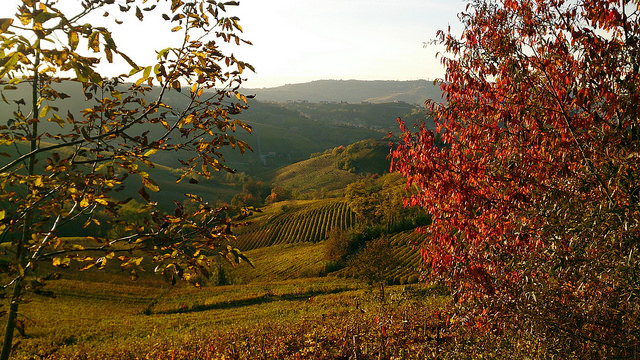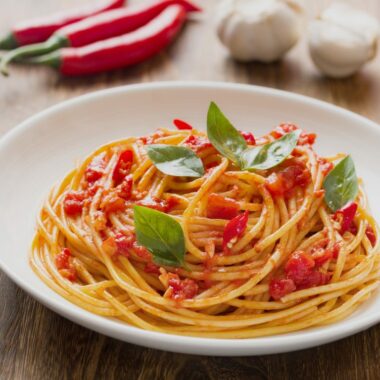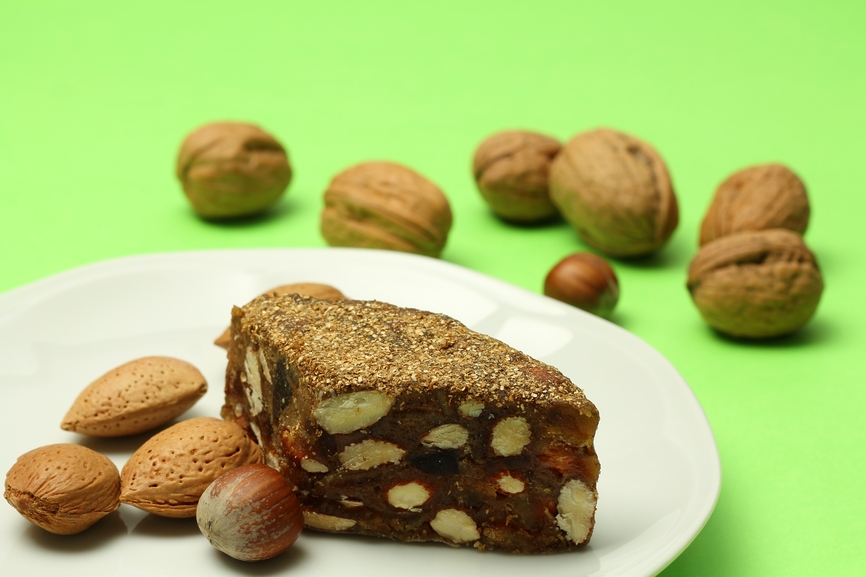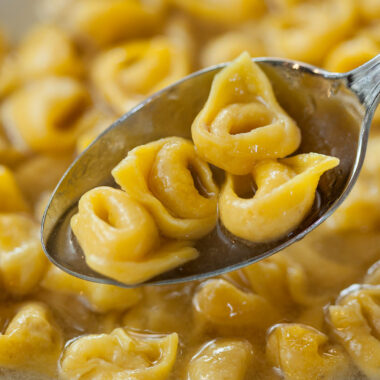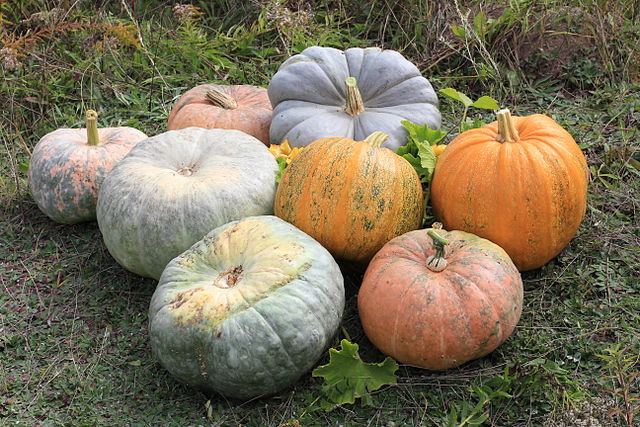Radicchio (roughly translated in UK English as chicory and known in American supermarkets as radicchio) is a typically autumnal produce and a true favorite of Italian cuisine of the Fall. Particularly loved in the North, it is grown and consumed very much in all Northern regions, but is greatly associated with the North-Eastern part of the country, from where some of its best varieties hail from. Its typical color, a deep, rich burgundy is, some say, very reminiscent of the hues of the Fall itself. As we at lifeinitaly love good food and all that is, well, quintessentially Italian, we decided to dedicate some space to this ruby (but also green!) colored delicacy and give some interesting information about its characteristics, its origins and how to use it in the kitchen, both to cook and –yes, indeed!– also as a health boosting ingredient.
Read on!
What is Radicchio?
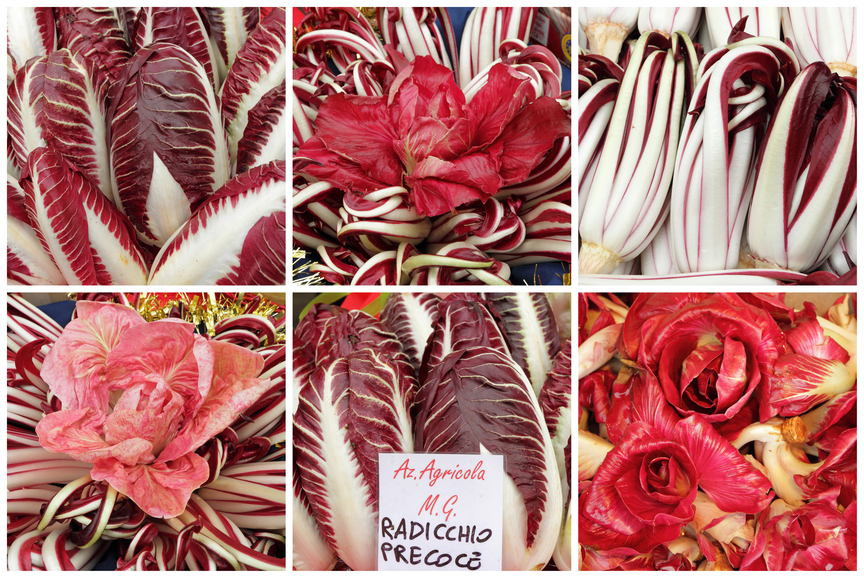
With the generic term radicchio, we usually mean a vegetable red or green in color, its leaves overlapping in a round or tapered shape, its taste typically bitter. Radicchio contains vitamin C, and retinol-equivalents such as A-catorenoids: it punches a lot of healthy benefits for such a small veg! Many a variety of radicchio, both red and green, gained an IGP certification that proves they come from a specific – and protected – geographical area (IGP stands for, in Italian, Indicazione Geografica Protetta).
Truly, the word radicchio is pretty generic, as it is usually applied to various types of “bitter leaves” and it often does not mirror the botanical classification of the vegetable: if we had to call it with its proper botanical name, radicchio should be always cicoria, which we usually harldly use in Italian. It is interesting to note, though, that in some dialects, such as piemontese, the word cicoria (pronounced sicoria) is used instead of radicchio. As already said, the word indicates several different types of leafy vegs belonging to the same family, but both the way they look and their taste do change, at times quite a lot, depending on the type and the place of origin: some varieties are sweeter than others, for instance, but all types of radicchio are typically crunchy, even when cooked.
Roughly, however, we can identify three, main types of radicchio: one with deep red leaves, one with dapple colored ones and a third with green ones. Particularly esteemed are red radicchio varieties hailing from Veneto, such as the radicchio rosso di Treviso, radicchio rosso di Verona and the radicchio rosso di Chioggia.
Types of Radicchio
As we mentioned above, when we think of radicchio it is the color red that comes to mind, but this amazing vegetable comes in many shades and shapes. Each variety is characterized by specific flavor characteristics and is used in the kitchen for different purposes.
Radicchio Rosso (red radicchio)
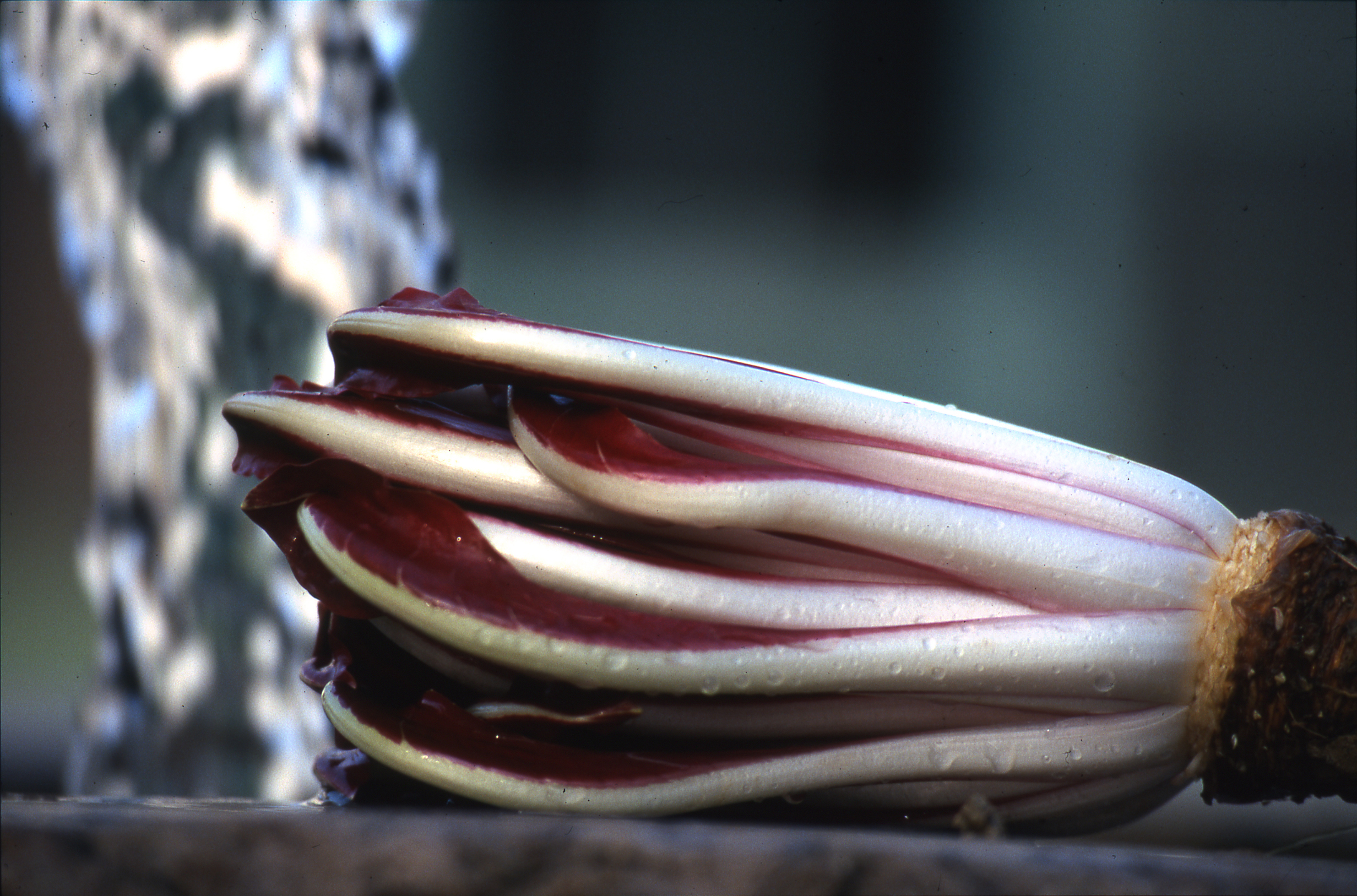
With this name we define a vegetable whose color goes from ruby red to purple and that belongs to the cichorium genus and the intybus species. It is usually to one of its varieties we think when we speak of radicchio. Its most famous representatives are the radicchio rosso di Treviso IGP, tapered in shape and with narrow leaves; the radicchio rosso di Chioggia IGP, of rounder shape and the radicchio rosso di Verona IGP, which looks pretty much like the radicchio rosso di Treviso, but has much wider leaves. The red radicchio of Treviso has a long history of culinary tradition in Italy: grown since the 16th century, it used to be considered the vegetable of the poor and was often used as animal feed. How it turned from this to one of the most respected ingredients in seasonal Italian cuisine, we do not know.
Radicchio Variegato (bicolored radicchio)
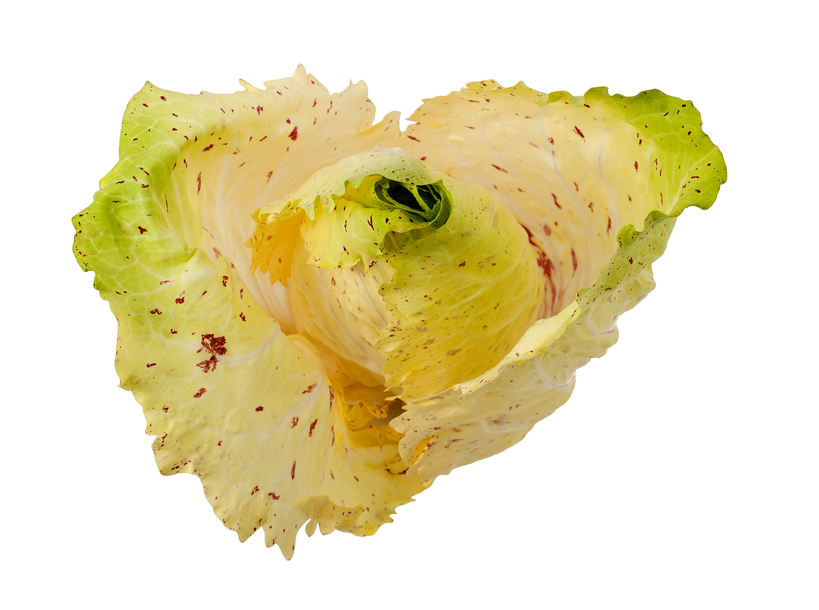
This type of radicchio is characterized by leaves of a yellowish-green hue, covered in small, reddish dots. The most famous of all radicchi variegati is that of Castelfranco IGP, which has been obtained by crossing the red radicchio of Treviso and the indivia scarola, another plant belonging to the chicory genus.
Radicchio Verde (green radicchio)
If red radicchio is a very generic type of nomenclature, green radicchio is even more problematic, as it can be used for almost all types of bitter chicory. The radicchio verde pan di zucchero, with tapered shape and large leaves, and the radicchio verde selvatico, which comes in different varieties itself, are the best known green radicchi in Italy.
Most types of radicchio can be further classified in precoce and tardivo, that is, of earlier and later maturation, a factor that defines not only the moment the vegetable is ready to be consumed, but also its taste.
Radicchio and its properties
All varieties of this vegetable are extremely healthy, this is why radicchio should always find a place on our autumnal table. It contains potassium, sodium, phosphorus, iron, magnesium, copper, calcium, manganese, an enormous amount of vitamins and aminoacids. Radicchio is, of course, virtually fat free and has only about 14 calories for 100 grams, so it is a good option, as all vegetables, if you are on a diet of some sort. In name of its bitterness, it is said to increase appetite in people suffering from lack of it, to whom is often served before a main meal as a starter. It helps fight anaemia and it is also known for its depurative qualities, especially for the liver. It is a diuretic, a mild laxative and even helps fighting temperature: seriously, is there anything this favorite of the Fall cannot do?
Indeed, its properties are plentiful, but, above all, radicchio is an excellent tonic for the immune system, and it is said to help prevent colds and flu. If you suffer from seasonal voice loss, or you would like to prevent it, try a mixture of 100 gr of radicchio, a tablespoon of hedge-mustard, two tablespoons of thyme honey and 200 ml of water. Mince the radicchio thinly in a food processor, then filter the mixture obtained. In the meanwhile, boil the water and place the hedge-mustard to steep into it for about 15 minutes. Filter it, add the thyme honey and, once it has cooled, add the radicchio’s juice previously filtered. This should be consumed by the tablespoon throughout the day.
Radicchio can be incredibly helpful for those suffering from constipation, too: get 1 litre and a half of mineral water, possibly a variety containing sulphur in high quantities, and bring it to the boil. To it, add 100 gr of radicchio, previously chopped, and let it steep for 15 minutes. Filter the mixture, making sure to squeeze all the water off the radicchio into it, add a tablespoon of acacia honey and drink daily.
Last, but certainly not least, radicchio is great for our liver as it helps detoxing it. Blend 150 gr of radicchio with two medium-sized apples, a sliced leek and a celery stalk. Once these ingredients have been properly blended, add 50 drops of artichoke mother tincture. Have this instead of dinner for a week to cleanse your liver and help improve its functions.
Radicchio in the Kitchen
And now, let us say something about what to do with radicchio in the kitchen. As said above, this ingredient is particularly loved in the north-eastern regions of Italy, where many of its finest varieties come from. All types of radicchio can be eaten both raw and cooked: if you prefer it raw, then you need to do nothing more than what you do to prepare common lettuce. Mind, though: raw radicchio is usually used as an ingredient for salads, rather than consumed on its own. Cooking radicchio, is a different pair of hands: recipes are plenty and often lay their origins in a long lost past. The radicchio di Verona, for instance, is great for grilling and barbequeing, as its elongated yet compact shape makes it ideal for this type of cooking. The radicchio tardivo di Treviso is immensely popular in Veneto as an ingredient for pasta and rice dishes. It can also be used to prepare meats, roasts and rolls, as well as being added to sauces. Radicchio is also a great side dish when sautéd with olive oil, salt lemon or garlic.
Some Recipes
Let’s face it: this is what you really came here for, recipes to experience some more Italian food’s deliciousness! As we at lifeinitaly adore good food, it is a true pleasure to comply… Here comes the sample for an entire menu based on radicchio: try these recipes and let us know how it goes, maybe even with some photos and comments on our facebook page or tweet us (@LifeInItaly14).
Come on, put on that apron and let’s get started!
L’Antipasto: Crespelle al Radicchio
Now, do not panic: crespelle are nothing more and nothing less than good, old fashioned crêpes. Just, you know the way it is between we Italians and the French: we love each other, in the end, but when it comes to food, both nations feel like it is June 1940 all over again and no! We call stuff our own way, not theirs! (France, je t’adore, do not get this wrong, s’il te plaît!).
These crespelle are heart warming and creamy, and every mouthful seems to carry within all the colors of the Italian Fall.
Ingredients (4 people)
- 3 eggs
- 200 gr of flour
- 1/2 liter of milk
- 2 teaspoons of butter
- 3 heads of radicchio di Treviso
- 6 artichokes
- 200 gr of smoked, grated scamorza
- 250 ml of bechamel sauce (you can buy a ready made pack or make it yourself following this recipe)
- 1 tablespoon of thyme
- 1 glass of white whine
- 1 clove of garlic
- 4 tablespoons of extra-virgin olive oil
- 1 lemon
- salt and pepper
First of all, prepare the crespelle: mix together, either by hand or in a food processor, the eggs, flour and a pinch of salt. Let the batter rest in the fridge for at least an hour, then cook them just as you would do for pancakes, adding a tiny bit of butter in a non-stick pan and pouring the right amount of batter in it. Remember, though, that crespelle are much, much thinner than pancakes and larger in diameter (once again, think of how crêpes look like and you have it). Once they are ready, or while the batter is resting in the fridge, you can take care of the vegetables: clean the artichokes then sautéd them with the extra virgin olive oil and the garlic – which you will need to peel and mash a bit – for about 15 minutes. Add the white wine, the radicchio and cook everything for an extra 5 minutes, then season with salt, pepper and the thyme. Stir well and voilà, your veggies are done.
Turn your attention to the crespelle again: spread bechamel sauce on each of them, then stuff them with the vegetable mix and some grated smoked scamorza. Fold the crespelle in a half to close them, then place them in an oven dish you have previously buttered slightly (the butter is needed to avoid the crespelle sticking to the dish, so keep the amount to a minimum). As this dish has to be served hot, you can either bake it straight away, if it is dinner time already, or cover the oven dish with some cling film and keep it in the fridge until about 20 minutes before eating. Heat the oven at 180 C (355 F), spread the remaining bechamel on top of the crespelle and cook for 15 minutes. Turn on the grill for the last 5 minutes of baking so that they get nice and crispy. Serve very hot.
Il Primo: Risotto Radicchio, Salsiccia e Prosecco
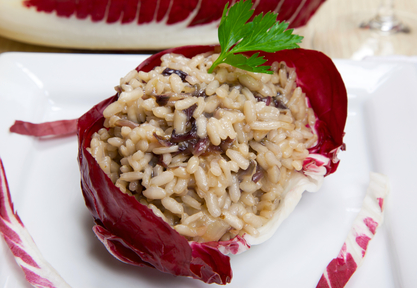
Ok, so: it is a risotto. With Italian sausage. And prosecco. You cannot fail with this. Radicchio in risotto is extremely popular and this is only one of many types of this popular Italian dish you can prepare with our delightful favorite veg of the Fall. Delicious are risotto with radicchio and speck, as well as a version with radicchio and gorgonzola.
Ingredients (4 people)
- 500 gr of vialone nano rice, or any high quality risotto rice, such as Carnaroli.
- 5-6 Italian sausages (or 500-600 gr of coiled Italian sausage)
- 2 heads of radicchio rosso (any variety)
- 2 shallots
- 1 glass of prosecco
- 1 vegetable stock cube
- 3 tablespoons of extra virgin olive oil
- 4 tablespoons of parmigiano reggiano
- 1 red onion
- 1 glass of red wine
- some cream of balsamic vinegar
- salt and pepper
Chop the shallots very thinly (you can use a food processor for it, if you want) and slice the radicchio in stripes. Heat up some extra virgin olive oil in a frying pan, then add the shallots and the radicchio and sauté until the shallot is golden. Remove the skin from the sausage and add the sausage meat to the radicchio. Sauté it, making sure to break it into small pieces while it cooks (last thing you want is giant lumps of meat in your risotto!). Once it is cooked properly, add the glass of prosecco and let it evaporate, then add the rice and let it toast for a few minutes: while doing so, stir occasionally to avoid the rice sticks to the bottom of the pan. In the meanwhile, prepare your vegetable stock by adding the stock cube to a litre of boiling water. Of course, if you have the time and feel like it, you can make your own vegetable stock. At this stage, as it happens for all types of risotto, you will add the stock to the rice gradually, letting it cook on a low to medium heat until it is fully absorbed.
While the rice cooks, slice the red onion and cook it in red wine for at least 30 minutes, adding some salt.
When the risotto is ready, add a tablespoon of butter, the parmigiano reggiano and stir well. Serve the risotto with a drizzle of cream of balsamic vinegar and a spoonful of red onion either on top or on the side.
Il Secondo: Involtini di Carne, Pancetta e Radicchio
This is a relatively simple recipe you can whip together quickly, without renouncing to taste and all the fantastic properties of radicchio. You can serve these involtini (radicchio rolls) with seasonal roasted vegetables or a simple mixed salad, to keep it fresh and healthy.
Ingredients (4 people)
- 2 large heads of radicchio rosso di Treviso
- 350 gr of minced beef
- 1 egg
- 50 gr of grated parmigiano reggiano
- 1 clove of garlic
- 1 bunch of thinly chopped parsley
- 6 leaves of fresh sage
- 1 glass of white wine vinegar
- 100 gr of thinly sliced bacon (even better if you can get your mitts on some Italian pancetta)
- balsamic vinegar
- extra virgin olive oil
- salt
- freshly ground black pepper
First of all, mix together the mince with the egg, parsley, parmesan, salt, pepper and the previously chopped (thinly!) garlic and sage leaves. Then bring to the boil a pan full of water and add the white wine vinegar to it. Place the radicchio di Treviso leaves in it for few seconds, drain them and place them on a clean kitchen cloth. Take the meat and herbs filling and place some of it along the length of the leaves: make sure it is not too much, because you will need to roll and close the involtini comfortably, yet, do not be too stingy either! Keep on doing so until you finish the filling, then roll each leave around it to form the involtino. Wrap a slice of bacon around each of them, place the stuffed radicchio leaves on a lightly oiled oven tray and cook under the grill for about 5-8 minutes, shaking the tray occasionally to turn them. Serve very hot, drizzled in balsamic vinegar.
As you can see, radicchio is a true favorite of the Fall in Italy. Used to cook and to cure, radicchio has a long history of excellence, a fact shown by the IGP denominations of the majority of its varieties. If you never tried it, you may be scared by the idea of eating its bitter tasting leaves, but trust us and give it a go: when raw, its crunchiness and bitterness add such a punch to an otherwise boring green salad. When cooked, it is an amazing companion for creamy, comforting rice dishes and meats. Just try it, maybe following one of our recipes, and you, too, will understand why Italy is so fond of its beautiful, bitter, burgundy colored vegetable that comes from the cold.
By Francesca Bezzone




